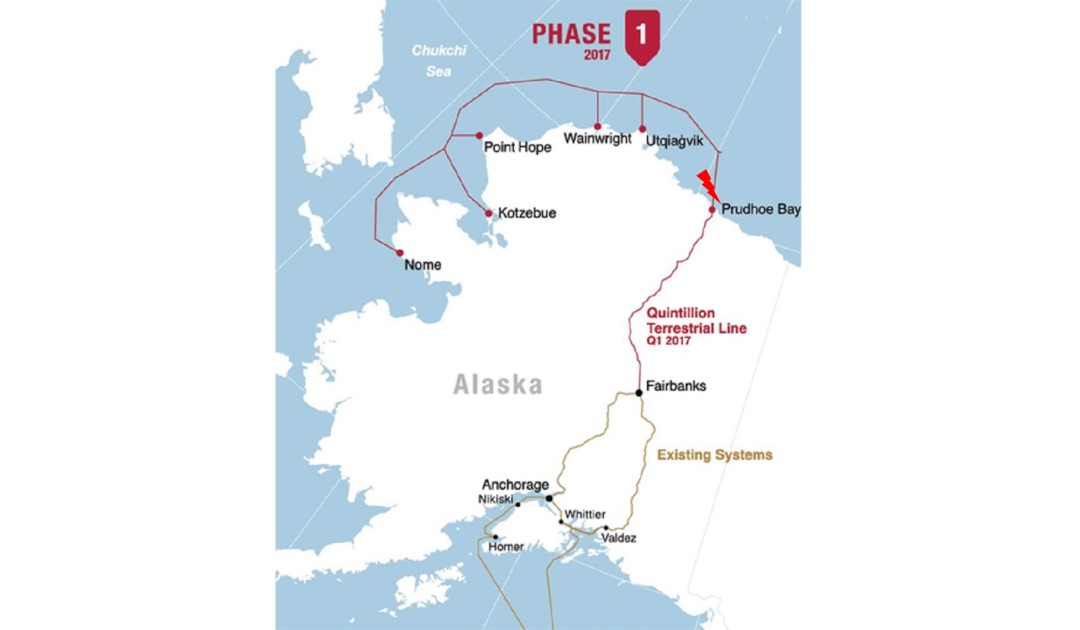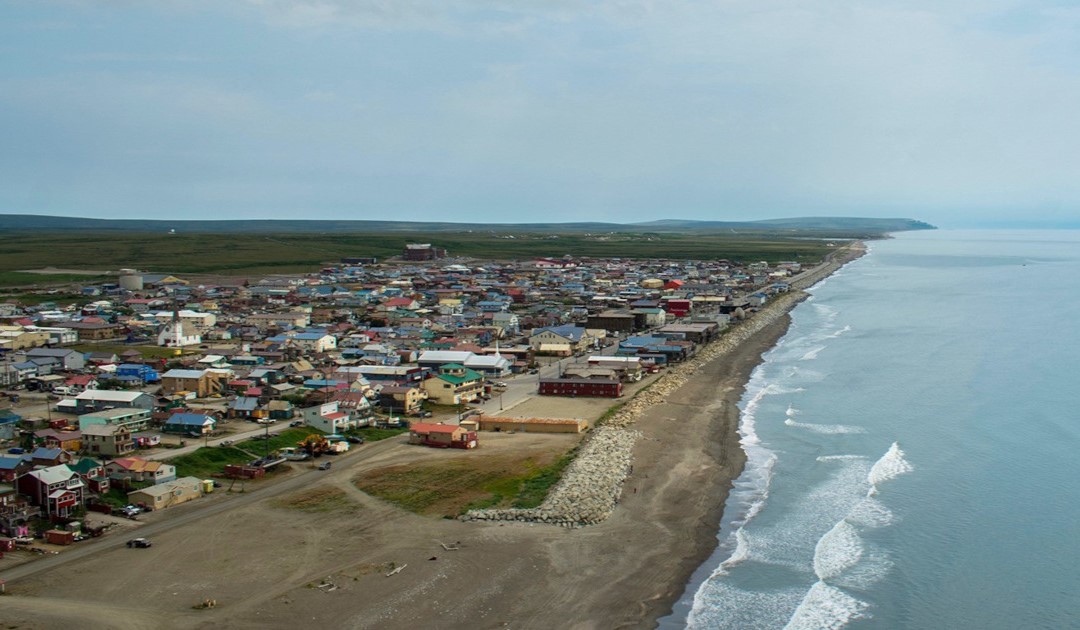
An American telecommunications company with ambitions to connect Japan to Europe via the Arctic has suffered a setback: An iceberg grounding on the seabed left the inhabitants of northwest Alaska without access to the Internet via the company’s subsea fiber optic cable.
Despite a record funding of 88.89 million dollars provided by the National Telecommunications and Information Administration (NTIA) to strengthen Alaska’s subsea fibre optic network, it took only an iceberg to cut off Northern parts of the state from hi-speed internet a few days earlier.
Between June 10 and 11, a grounded iceberg scraping along the seabed severed the fiber optic cable responsible for connecting part of northwest Alaska. Communities around Ulguniq, Utqiagvik, Point Hope, Kotzebue and Nome are currently cut off from the Quintillion network, one of the major regional telecommunications companies.
Around 20,000 people are affected by the blackout. “This is a wake-up call for all of us. We need to make sure that our emergency plan is dusted off”, said the mayor of Nome after realising the impact of the blackout on this town of 4,000 inhabitants.

The blackout had severe consequences on day-to-day life. Businesses, universities and administrative centers were forced to close as they no longer had access to their networks. “Some businesses reverted to printing a credit card on carbon paper to cash up,” explains Michael Delaunay, political science researcher and submarine cable specialist at the Observatoire de la Politique et de la Sécurité de l’Arctique.
While awaiting repairs, One Web and SpaceX are increasing their satellite coverage in Alaska. Satellite or terrestrial coverage provides redundancy to compensate for the loss of connection. People holding telephone contracts with other operators, such as OTZ, get by with an intermittent connection. Starlink equipment sales outlets are in full swing.
Repairing and improving connectivity
Quintillion needs to repair the cable. “This operation will allow Quintillion to see what equipment is needed? What is the effect of ice on operations? How long will it take? Will it be necessary to position an ice-breaking cable ship in this area in the future? It’s a trial run,” explains Delaunay.
The company located the break off the coast of Oliktok, a port complex on the northernmost point of the American continent accessible by car. “By sending signals down the cable, they can detect where the signal breaks up”, he states. According to the measurments, the signal stops at 55 kilometres from the coastline, where the seabed lies not more than 20 metres below the surface of the ice.
The damaged cable had been laid in 2016. “In 2017, Quintillion was forced to bury it in a furrow 4 metres deep, dug by a plough. The company knew that an iceberg could damage the cable,” Delaunay recalls. The company expects the repairs to take between 6 and 8 weeks. “There are no ships available in the area, as the cable-layers are very busy at the moment,” says the expert.
To prevent the network from collapsing again, the company will be installing a second submarine cable between Nome and Homer. This new section will complete a loop around the peninsula that runs both at sea and on land. This new installation will be an important back-up: in the event of an renewed blackout, all the towns will remain connected.

“The initial project was to connect Alaska to Japan and Europe. If this had been done from the outset, the network would already have been redundant,” says the political scientist. Although Quintillion is still in the running to establish the link, a rival project is getting ahead of itself. “The Far North Fiber project is being led by the Finnish company Cinia, partially funded by the EU, and will be manufactured by French Alcatel Submarine Networks. Alcatel has already laid the Quintillion cable, so the company has experience in this field,” he adds.
Cable-laying ships are very expensive to operate, costing between 1 and 2 million per mission, and some only last a few weeks. That’s very lucrative as the link between Japan and Europe represents 15,000 kilometres of cable. Michael Delaunay believes that for such an undertaking, “the first one to secure the financing will lead the market”.
For the time being, Nome remains cut off from the outside world. But once connection is re-established and reinforced by a second subsea cable, the city will benefit from another project that will open it up to the outside world: six hundred million dollars have just been allocated to redevelop its port by 2030. Thus, it is set to become the USA’s first deep-water port in the Arctic capable of handling large vessels from various sectors such as tourism, defense, offshore and trade – Nome could become an important Arctic hub.
Camille Lin, PolarJournal
More about this topic:





